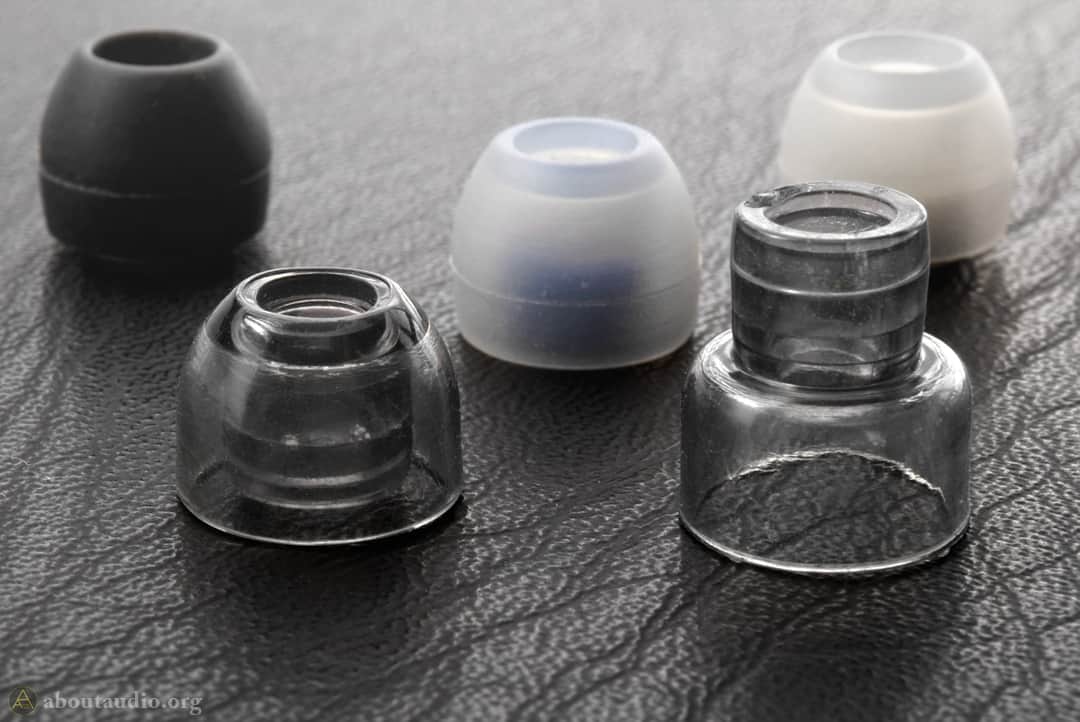 AZLA Xelastec Review: Brand-new solution
AZLA Xelastec Review: Brand-new solution
Eartips are such a tiny accessory that does not seem to matter much while it is actually the most crucial part of your earphone. Having a good fit directs the user to properly and fully experience the sound from the earphone. Each person has different shapes, sizes, and angles for their ears. That leads to a possibility that what you hear may differ from what others hear, often in a negative way.
Thus, even if you do not particularly feel discomfort from your current eartips, it is still possible for your fitting to be far off, making an earphone sound horrible than how it truly sounds. The situation could also work the opposite way – you may be receiving a good sound through your current eartips, yet the fit may be uncomfortable or even painful. Since both of these elements (sound and comfort) must be achieved for a better experience, a number of brands have been coming up with numerous types of eartips so far.
 Silicone, Foam, and now… TPE.
Silicone, Foam, and now… TPE.
Though if we vaguely categorize them, types of eartips could be divided into three groups; silicone, foam, and a hybrid of both. However, an extra group of eartip has been added into the category by AZLA. Now we have a specially formulated TPU made into an eartip, under the name of “Xelastec”. AZLA is a Korean IEM/eartip manufacturer that has been producing a variety of products including AZLA IEMs (Horizon, Orta, Zwei, etc.) and the Sedna Earfit series. Let us now go through the highlights of Xelastec and how it differs and compares to other types of eartips.
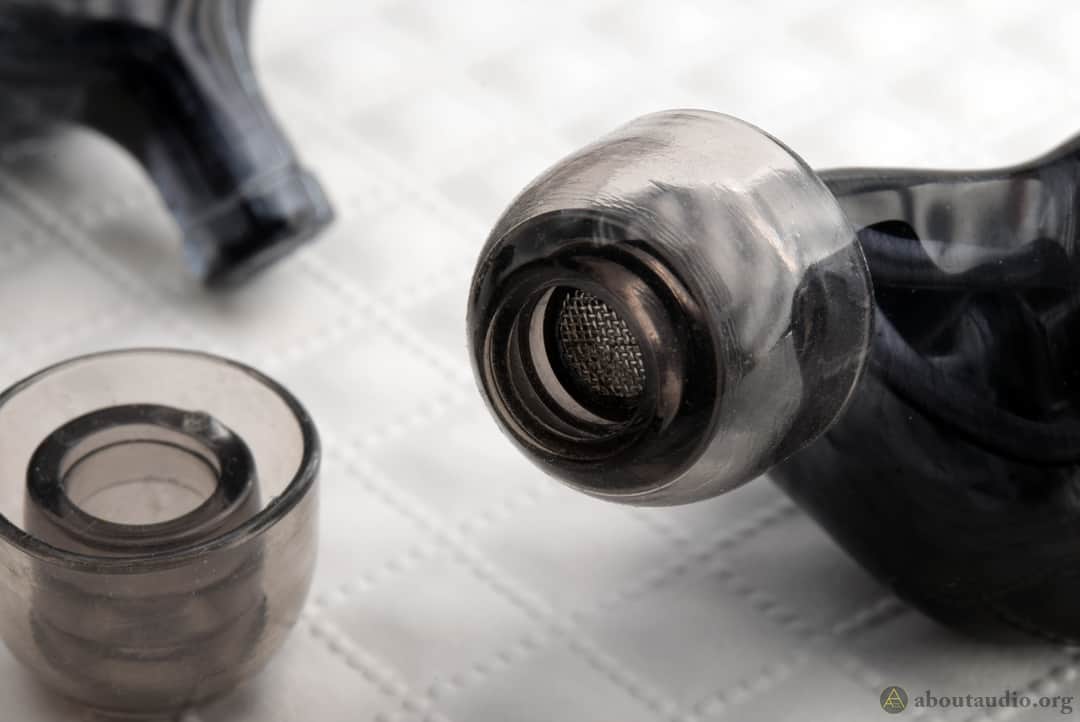 The Pitch
The Pitch
Xelastec is one unique eartip. It is silicone but not much similar to the ordinary silicone tips we use. Instead, XELASTEC uses Thermoplastic elastomers (TPE) as its material which is a mixture of polymers. TPE has both characteristics of plastic and rubber, hence it is also referred to as Thermoplastic rubbers. Now you may ask what are the differences between using TPE instead of ordinary silicone. The coolest and the greatest feature of XELASTEC is that it automatically modifies its shape to match your ear canals. It is similar to the way how foam tips work – but instead done with silicone (sort of).
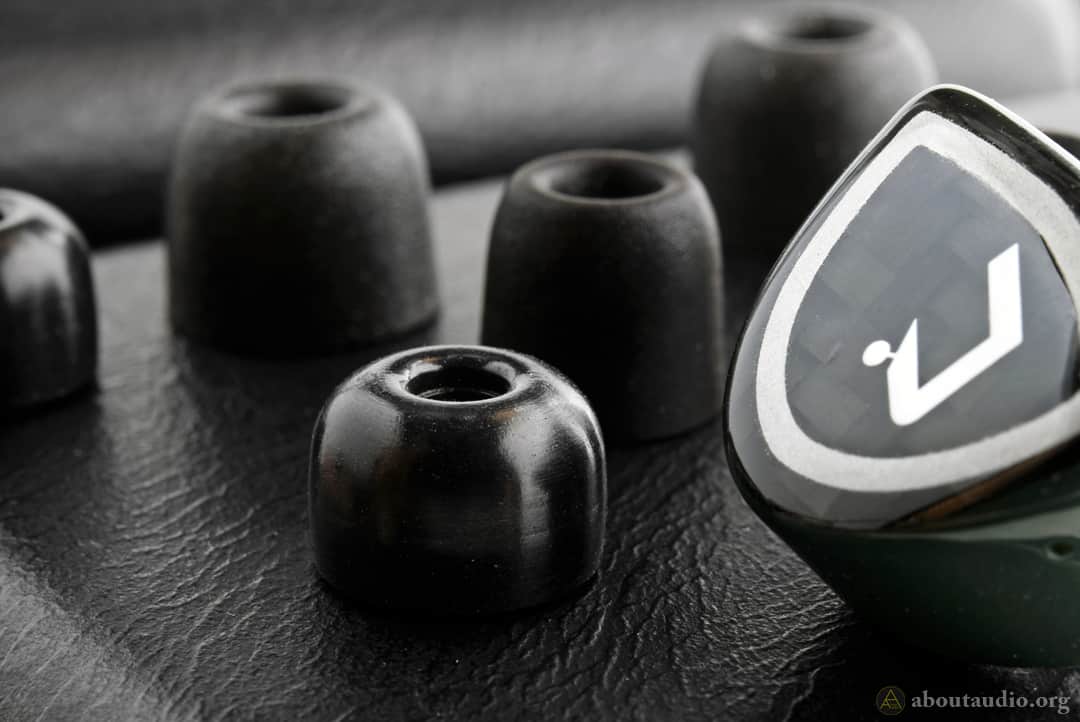 But why were foam tips popular in the first place?
But why were foam tips popular in the first place?
Before talking about the other features of Xelastec, let us first go through the reason why so many people have been using foam tips. Foam tips are contractible that allows users to insert them into the ears and let the foam expand accordingly to their shapes. Since that, foam tips make it much easier for users to achieve higher isolation and better comfort. Just as the name says – it is a foam version of an eartip that is “customizable” to every user because of its cushion-like texture.
Now, there are some side effects once using foam tips. First, foam tips deteriorate fast. They would soon begin to diminish in contractibility and isolation. They are fragile, so they will start to show splits and cracks after some usage or eventually break down. Lastly, and above all, the foam itself serves as an extra layer of a damper to the earphone nozzle. This causes the sound to be duller, warmer, looser and increased in bass quantity. Of course, it would be unfair to necessarily call such changes to be bad (since some may actually prefer their IEMs to gain those effects), though they are undoubtedly signs of degraded sound quality caused by the foam.
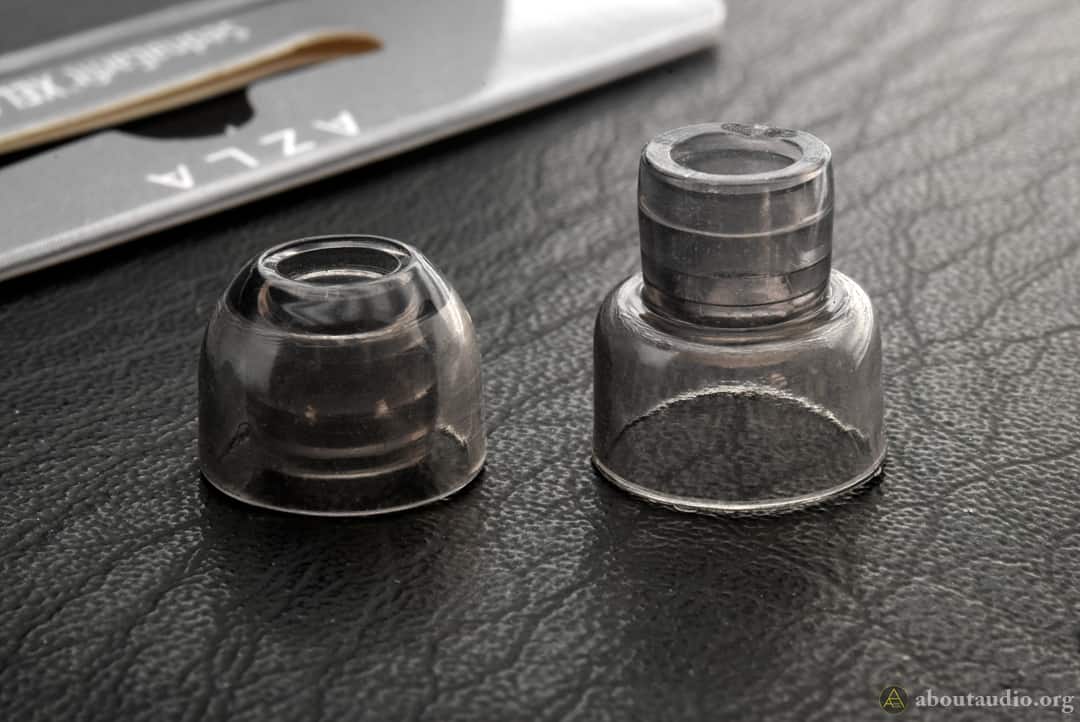 Xelastec and its Thermoplsticity
Xelastec and its Thermoplsticity
Now to return all the way to the main subject, there are clear likes and dislikes when it comes to using foam tips or not. The isolation and comfort that they provide are desirable, yet all those multiple side effects are what keeps many of us away from using foams – including myself.
However, the story changes in the case of Xelastec. Xelastec is a mixture of plastic and rubber that has both thermoplastic and elastomeric properties – means that it is just as durable as high-quality silicone that also consists of thermoplasticity and stronger flexibility. Unlike foam or ordinary silicone, Xelastec reacts to the warmth of the ears and soon begins to become softer. Then the shape gently deforms and tightly seals the ear canal. Just for reference, the eartips do not deform in shape while it is not worn. They also quickly return to their normal shape once removed from the ears.
 Super Firm Fit & Isolation
Super Firm Fit & Isolation
While ordinary silicone eartips have a rather smooth surface, Xelastec is very clingy in its texture. Yes, the newest SpinFit eartips do provide a stronger grip than their former products or other silicone tips, though not even close to what Xelastec provides. Therefore it may require just a slightly more effort inserting into the ears as the insertion feels a bit stiffer, but nothing close to being bothered. These would perhaps be the eartips that would least likely fall outside the ears since their firm grip. The inner core is also cut with deep grooves for a secure installation to the nozzles.
 Precautions
Precautions
While the material used for Xelastec is special, it also requires some precautions and treatments too, however. First, you should not clean the eartips with alcohol swabs or soap. This would degrade or disable Xelastec’s elasticity and thermoplasticity. As recommended by AZLA, Xelastec eartips must only be rinsed with cool or room-temperature tap water in case of cleaning them. Alongside, due to the nature of its texture, it is better to let the moisture dry out than wiping off with cloths or tissues. Otherwise, the fibers or dust from the wiping material will likely stick again to the eartips.
Second, Xelastec should not stay deformed in the same shape for very long periods. I mean very long, at least for weeks. Rest assured, they would almost never stay deformed even if you wear them for long periods or time (under the assumption that you would not wear them longer than 100 hours or so…). However, if you shove them into a small case and let them stay squished for days and weeks, it is possible to get them deformed as shown above. They are still usable, though the eartips are no longer in a nice rounded shape as it should be. You may continue using if the fitting is just fine. If the eartips are too far deformed and need a “reset” to their shape, follow the steps below.
1. Prepare a cup of hot or boiling water.
2. Flip the umbrella portion of the eartips inside out (otherwise deformation may get worse)
3. Drop the Xelastec eartips into the water. Let it stay for one minute.
4. Drain out the hot water and cool it off by pouring it in with cold water. Let it stay for 30 seconds.
 Will the hot water do the trick?
Will the hot water do the trick?
Cutting to the point, yes it does. It is still possible for the recovery to fail if the deformation was severe, yet it will work in most cases. But with some side-effects though. The photo above presents a pair of Xelastec eartips – the left one is the one after the “hot-water recovery” and the right one is the original. The first noticeable difference is its shape. The umbrella portion under the core has now become slightly wider. The size change is not dramatic to consider size S to be bumped up to MS, though it did get larger. I was not able to particularly find significant changes in my fitting, but keep this in mind before you attempt the recovery procedure. It is possible to utilize this trick to enlarge your Xelastec eartips in case need a bigger size, though I still would not recommend doing that. The second difference is the color. The restored version is now less transparent along with a mild discoloration. Other than those two, the restored version is still working fine with all its original features still intact. Of course, the best scenario is not to cause permanent deformation to your Xelastec eartips.
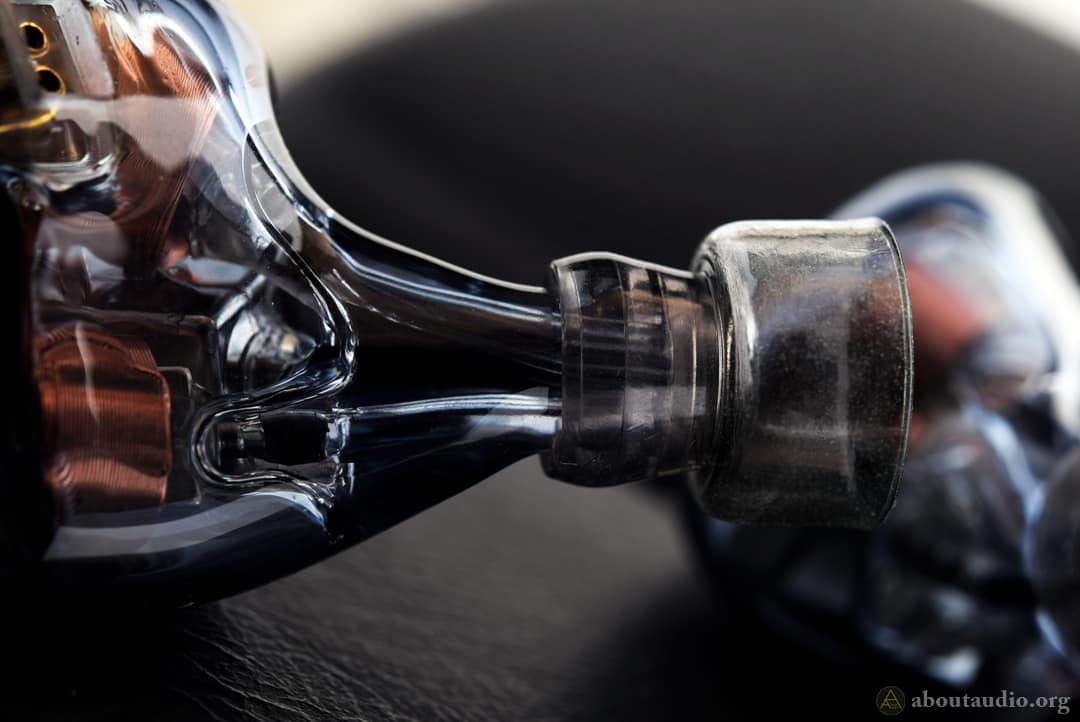 The Linearity
The Linearity
Another major element other than the material itself has to do with something called ‘sonic linearity’. AZLA has been emphasizing their importance of consistent linearity in their products – to form the straightest sound path for higher sonic accuracy. This particular philosophy has been applied throughout their IEM and eartip products. It is quite interesting as this runs completely counter to what SpinFit desires – to bend the sound path according to the angle of the nozzle. That being said, how does Xelastec compare to Spinfit? And how does Xelastec compare to Comply foam tips? It is now time for us to put all those to the test.
 Sound impressions: Xelastec with NXEars Opera
Sound impressions: Xelastec with NXEars Opera
This is one of my favorite matches with Xelastec. NXEars Opera is quite an eartip-sensitive IEM with a full, speaker-like sound that makes perfect synergy with Xelastec. In this combo, the overall theme of the change (or improvement) has to do with cleanliness. Lows are now tighter, denser, and faster. Sub-bass reverbs are now gently reduced which makes the low-end atmosphere a lot clearer. The bass still preserves the same large body but now does a significantly better job trimming down the possibly unwanted boomings. The dynamics are just as strong and further reveals the texture of the bass.
Mids are also cleaner and airier. It also takes a subtle step forward without altering much of the originally intended sound. Vocals bloom with slightly lesser reverbs, yet with good thickness and tighter density. Mids are also where Xelastec’s linearity could be vividly experienced, creating an impression of vocals taking a straight trip towards the ear canal without curving. This also merits the headroom as the sound stage is formed in a very natural and reference-like manner. Highs also gain a slight boost in presence with stronger clarity and vividness. This is also due to the calming of the lower-end quantity, overall being beneficial as Opera could surely use the extra treble presence to make the sound even better.
 What IEM does it work well with?
What IEM does it work well with?
The outcome of the sound varies by different IEMs, though there still is a common ground in how the synergy generally works. First of all, clarity. Possible clouding from the sound unveils, allowing the texture to be presented more blatantly. The overall sound would become airier, more straight-forwarded, and airier. Perhaps those three elements could be combined into the term “blatant”. This is fairly similar to what Acoustune AET08 does but in a more vast and blatant way.
The sound also gets tighter and harder in density, giving an impression of the sound travel feeling faster and snappier in reaction speed. However, due to this nature. There are sure cases where Xelastec does not work well depending on different IEMs. Those that are already flat, bright, or slim may result in the thinning of the body. If an IEM is already light in density or bass, there is also a chance of sounding way too light or lacking dynamics. In most cases, Xelastec tends to be especially effective for IEMs with heavy bass. Even if the bass is not heavy, if the IEM consists of warm, damp, or subdued tonality, Xelastec will likely work out nice.
 Verdicts
Verdicts
Xelastec is a remarkable product that started a new genre or category in the eartip market. Having the sonic characteristics based on the Sedna Earfit series, AZLA has now topped them with this ultra-grippy, auto-fitting nature to make things even better. Also cannot forget to mention that this could be a nice alternative to foam tips. Xelastec does not degrade the clarity or mumble the sound while consisting of a decent degree of “adaptability” in its form factor. Of course, that is why hybrid eartips were born, yet Xelastec is a lot more comfortable along with its unprecedented gripping force. Xelastec is a very unique, must-have eartip that is worth acquiring if you are an audiophile that knows the importance of tip-rolling.
RELATED REVIEWS
AZLA – Horizon AZLA – Orta AZLA – Azel AZLA – Zwei
AZLA – Xelastec (for Apple Airpods Pro)
Thanks to AZLA for providing Xelastec in exchange for an honest impression/feedback.
I am not affiliated with AZLA and none of my words were modded or asked to be changed.


